In today’s world, where urban living spaces are becoming increasingly compact, the need for innovative small bed designs has never been more critical. This article delves into various bed solutions that not only maximize space but also enhance the overall aesthetic of your home. By blending functionality with style, you can create a restful sanctuary without compromising on design.
Understanding Compact Living Spaces
Compact living spaces present unique challenges and opportunities. These environments require a careful selection of furniture that enhances both functionality and style. Understanding the dynamics of your space is crucial for making informed design choices. Whether you live in a studio apartment or a small bedroom, the right bed design can significantly improve your living experience.
Types of Small Beds for Limited Spaces
- Murphy Beds: Also known as wall beds, these fold up against the wall when not in use, freeing up valuable floor space for other activities. They are perfect for multifunctional rooms.
- Loft Beds: Elevating the sleeping area allows for additional space underneath, which can be used for storage, a desk, or even a cozy reading nook.
- Daybeds: These versatile pieces can serve as both a bed and a sofa, making them ideal for small living rooms or guest areas.
Choosing the Right Mattress for Small Beds
Selecting the appropriate mattress is essential for ensuring comfort in small bed designs. Considerations such as size, thickness, and material play a significant role in your overall sleeping experience.
- Size and Thickness: Opt for a mattress that fits the bed frame snugly without overwhelming the space.
- Material Options: Explore various materials such as memory foam, latex, or innerspring to find what best suits your comfort preferences.
Creative Storage Solutions with Small Beds
Incorporating storage solutions into small bed designs can significantly enhance functionality. Here are some clever ways to integrate storage without compromising style:
- Under-Bed Storage: Utilize the space beneath the bed for bins or drawers, keeping your room organized and clutter-free.
- Headboard Storage: Consider headboards with built-in shelves for books and decor, combining practicality with style.
Incorporating Style into Small Bed Designs
While functionality is crucial, style should not be overlooked. Here’s how to incorporate aesthetic elements into small bed designs:
- Color Schemes and Patterns: Light colors and minimal patterns can make a space feel larger and more open.
- Decorative Accessories: Add throw pillows, blankets, and wall art that complement the bed and reflect your personal style.
By exploring various small bed designs and incorporating practical insights, you can create a comfortable and stylish sleeping area in any compact space. Remember, the key is to find a balance between functionality and aesthetics, ensuring that your small bed not only meets your needs but also enhances the beauty of your living space.
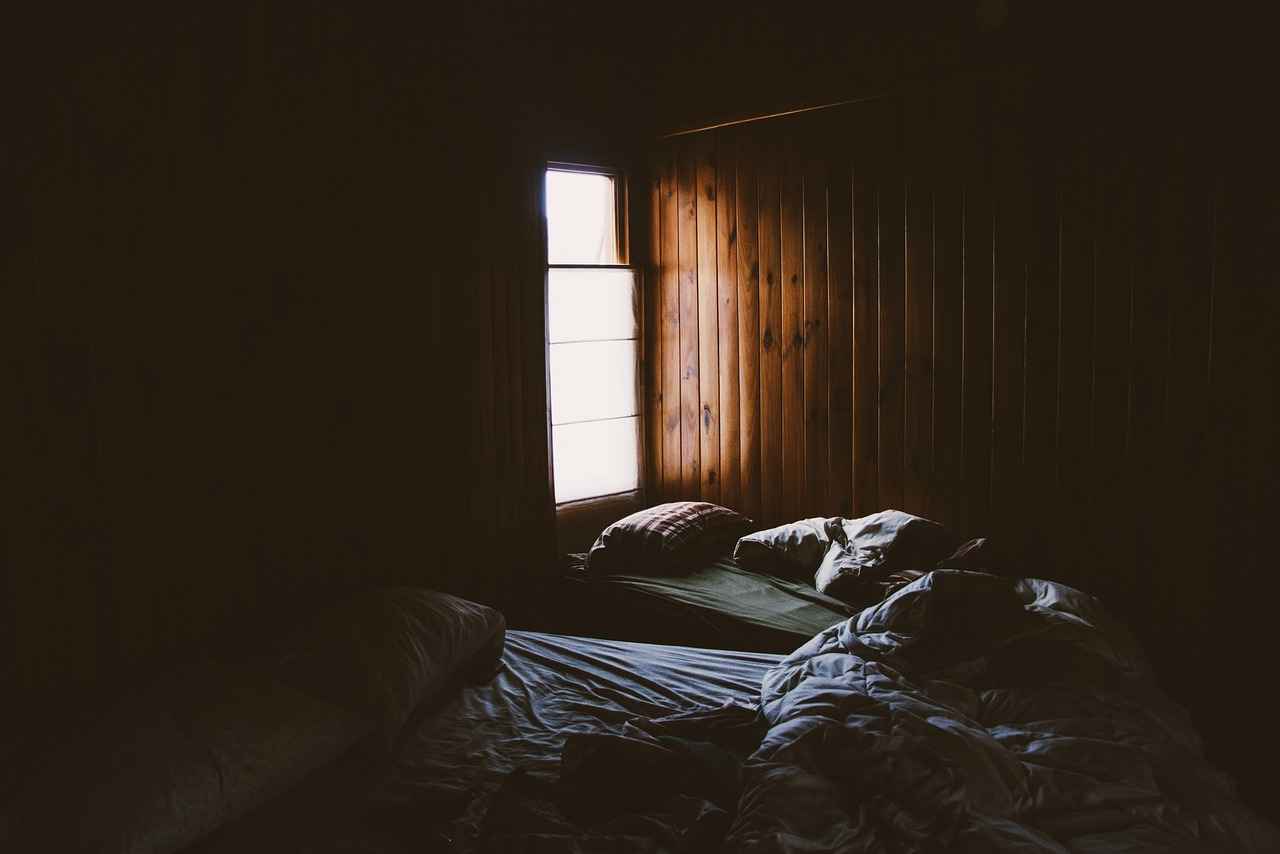
Understanding Compact Living Spaces
Compact living spaces, such as studio apartments, tiny homes, and micro-apartments, have become increasingly popular due to urbanization and the rising cost of living. These environments offer unique challenges and opportunities for those looking to maximize their living experience. Understanding the intricacies of compact spaces is essential for selecting the right bed design that not only enhances functionality but also adds to the overall style of the room.
When we talk about compact living, we refer to spaces where every square foot counts. The limited area can often lead to feelings of clutter and confinement if not designed thoughtfully. Therefore, it is crucial to consider the layout and furniture choices carefully. A well-planned compact space can feel open and inviting, rather than cramped and chaotic.
- Maximizing Vertical Space: One of the most effective strategies in compact living is to utilize vertical space. This can be achieved through loft beds or wall-mounted shelving, which frees up valuable floor space.
- Multi-Functional Furniture: Opt for furniture that serves multiple purposes. For example, a bed that doubles as a sofa during the day can transform a room’s functionality.
- Smart Storage Solutions: Incorporating storage options such as under-bed drawers or built-in shelves can help maintain organization and reduce clutter.
Choosing the right bed design for a compact space requires careful thought. Murphy beds, for instance, are an excellent option as they can be folded away when not in use, allowing for more open floor space. Loft beds are another popular choice, as they elevate the sleeping area and create additional room underneath for storage or workspaces.
Additionally, the style of the bed should not be overlooked. Aesthetics play a vital role in making a small space feel larger and more inviting. Light colors and minimalist designs can create an illusion of openness, while decorative accessories can add personality without overwhelming the space.
In summary, understanding compact living spaces is fundamental for selecting the right bed design. By focusing on maximizing space, incorporating multi-functional furniture, and maintaining an appealing aesthetic, you can create a comfortable and stylish environment that meets your needs. The right bed design can enhance both the functionality and style of compact living spaces, making them not only livable but also enjoyable.
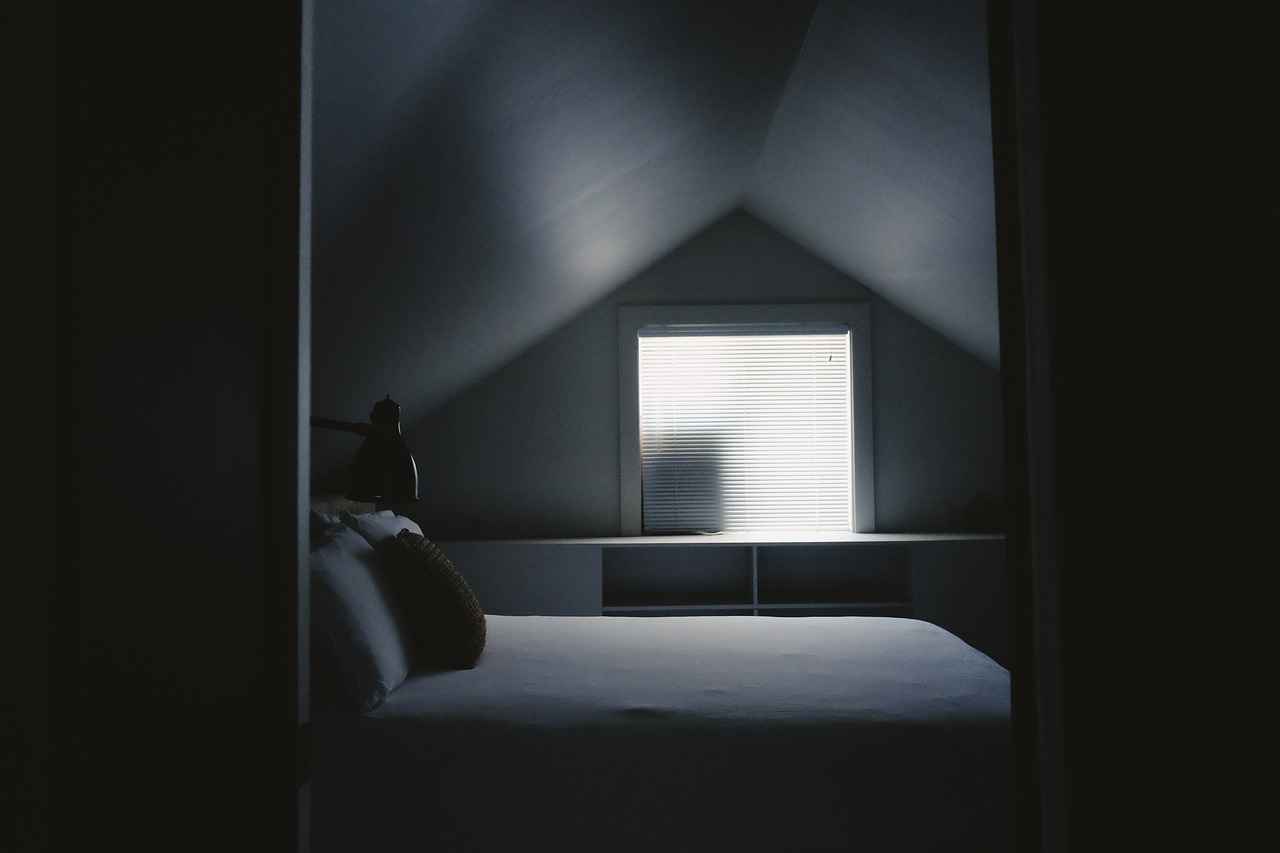
Types of Small Beds for Limited Spaces
When it comes to optimizing living spaces, small beds are essential for making the most out of limited areas. Various designs cater to different needs, ensuring that comfort and functionality coexist. Below are some of the most popular types of small beds that are perfect for compact living environments.
- Murphy Beds
- Loft Beds
- Daybeds
- Trundle Beds
- Futons
- Platform Beds
Murphy beds, also known as wall beds, are a fantastic solution for maximizing floor space. These beds can be folded up into the wall when not in use, allowing for a versatile living area. They are particularly beneficial in studio apartments or multi-use rooms.
Loft beds elevate the sleeping area, creating valuable space underneath. This area can be utilized for a desk, storage, or even a cozy reading nook. Loft beds are ideal for children’s rooms or any space where vertical height can be leveraged.
Daybeds serve a dual purpose as both a sofa and a bed. They are perfect for small guest rooms or living areas that require flexibility. With the right bedding and accessories, a daybed can be styled to fit seamlessly into any decor.
Trundle beds come with an additional bed that can be stored underneath the main bed. This design is excellent for accommodating guests without taking up extra space. When not in use, the trundle can be tucked away, maintaining a clean and organized look.
Futons are versatile pieces of furniture that can be transformed from a sofa into a bed. They are particularly popular in small apartments and multi-functional rooms. Available in various styles and materials, futons can easily blend with different interior designs.
Platform beds are low-profile designs that eliminate the need for a box spring. They often come with built-in storage options, making them a practical choice for compact spaces. Their sleek design also adds a modern touch to any room.
Each of these small bed types offers unique advantages that cater to different lifestyles and preferences. When choosing the right bed for your limited space, consider factors such as functionality, aesthetics, and storage options. By selecting the right design, you can create a comfortable and stylish sleeping area without compromising on space.
In addition to the bed type, it’s essential to consider the mattress that complements your choice. The right mattress can enhance your sleeping experience while fitting perfectly into your small bed design. Explore various materials, sizes, and thicknesses to find what works best for you.
Ultimately, the key to making the most of limited spaces lies in choosing the right small bed that fits your needs while enhancing the overall functionality and style of your living area.
Murphy Beds
, commonly referred to as wall beds, are an innovative solution for maximizing space in compact living areas. These versatile beds are designed to fold up against the wall when not in use, effectively freeing up valuable floor space for various activities. This makes them an ideal choice for studio apartments, small bedrooms, or multi-functional rooms where space is at a premium.
One of the most significant advantages of Murphy beds is their ability to transform a room’s functionality. During the day, the bed can be tucked away, allowing the area to serve as a living room, office, or entertainment space. This adaptability is especially beneficial for urban dwellers who often face the challenge of limited square footage.
Moreover, Murphy beds come in a variety of styles and designs, catering to diverse aesthetic preferences and functional needs. From sleek, modern finishes to more traditional wooden frames, there is a Murphy bed to complement any interior decor. Many models also incorporate additional features, such as built-in shelving or lighting, further enhancing their utility.
When considering a Murphy bed, installation is a critical factor. Proper installation ensures not only the bed’s functionality but also the safety of its users. It is advisable to consult with a professional installer, especially for heavier models or those that will see frequent use. A poorly installed Murphy bed can pose risks, including structural failure or injury.
Another essential aspect to consider is the mattress. Selecting the right mattress for a Murphy bed is vital for ensuring comfort. Most Murphy beds accommodate standard mattress sizes, but it’s crucial to choose a mattress that is not too thick, as this can hinder the bed’s ability to fold neatly. Popular options include memory foam, which offers excellent support and comfort, and latex mattresses, known for their durability and breathability.
In addition to their functional benefits, Murphy beds can also enhance the aesthetic appeal of a room. By choosing a bed with a stylish design and complementary color scheme, homeowners can create a cohesive look that reflects their personal style. Decorative accessories, such as throw pillows and bedding, can further personalize the space and make it feel inviting.
For those looking to maximize storage in conjunction with their Murphy bed, several creative solutions exist. Under-bed storage is a practical option, allowing users to stow away items such as linens, clothes, or seasonal decorations. Additionally, headboards with integrated shelves can provide a space for books, personal items, or decorative accents, ensuring that every inch of the room is utilized effectively.
In summary, Murphy beds offer a remarkable blend of functionality and style, making them an excellent choice for anyone seeking to optimize their living space. With their ability to transform a room and accommodate various design preferences, they stand out as a top solution for compact living. By carefully considering installation, mattress selection, and storage options, individuals can fully leverage the benefits of Murphy beds while creating a comfortable and stylish environment.
Benefits of Murphy Beds
Murphy beds, also known as wall beds, have gained immense popularity in recent years, particularly in urban settings where space is a premium. These innovative designs offer a multitude of benefits that make them an excellent choice for anyone looking to maximize their living area without compromising on comfort or style.
One of the most significant advantages of Murphy beds is their versatility. By folding up against the wall when not in use, they allow a room to serve multiple functions. For instance, a small bedroom can quickly transform into a cozy living room or an office space, making them ideal for studio apartments or guest rooms. This flexibility is particularly beneficial for individuals who often host guests but do not have the luxury of a spare room.
Another key benefit is the space-saving aspect of Murphy beds. Traditional beds can take up a considerable amount of floor space, limiting movement and functionality within a room. In contrast, when a Murphy bed is stowed away, the floor space can be utilized for various activities, whether it’s a yoga session, a game night, or simply enjoying a more open environment. This feature is especially advantageous in smaller homes where every square foot counts.
Moreover, Murphy beds come in a variety of styles and designs, allowing homeowners to choose options that complement their existing decor. From modern minimalist designs to more traditional looks, there is a Murphy bed to suit every taste. This aesthetic appeal ensures that the bed does not just serve a functional purpose but also enhances the overall look of the room.
Additionally, many Murphy beds are designed with built-in storage solutions. This means that you can find models that include shelves, cabinets, or drawers, providing extra space to store linens, books, or personal items. This integrated storage can help keep a room tidy and organized, which is particularly beneficial in compact living spaces.
When it comes to installation, it is essential to consider the safety and functionality of the Murphy bed. While some individuals may opt for DIY installation, hiring a professional can ensure that the bed is securely mounted and operates smoothly. This is particularly important for beds that will be used frequently, as improper installation could lead to safety hazards.
Lastly, Murphy beds are not just for individuals living in small spaces. They can also be a fantastic solution for larger homes that require additional sleeping arrangements for guests. With the ability to fold away, they offer a practical solution for accommodating visitors without permanently dedicating a room to a bed.
In summary, the benefits of Murphy beds extend beyond mere space-saving solutions. They provide flexibility, aesthetic appeal, integrated storage, and the potential for professional installation, making them a wise investment for anyone looking to enhance their living environment. By incorporating a Murphy bed, you can create a multi-functional space that adapts to your lifestyle, ensuring comfort and practicality without sacrificing style.
Installation Considerations
When it comes to Murphy beds, also known as wall beds, proper installation is absolutely crucial. These versatile pieces of furniture can significantly enhance the functionality of compact living spaces, but their effectiveness hinges on how well they are installed. If you’re considering adding a Murphy bed to your home, it’s essential to understand the intricacies involved in the installation process.
First and foremost, hiring a professional installer is highly recommended. While some might be tempted to tackle the installation themselves, the complexity of these beds can lead to safety hazards and operational issues if not done correctly. A professional has the expertise to ensure that the bed is securely mounted and operates smoothly, thus preventing any potential accidents.
Moreover, the installation process involves precise measurements and alignment. A professional will take the time to assess your space and the specific bed model to ensure a perfect fit. This is particularly important in compact areas where every inch counts. An incorrectly installed Murphy bed may not fold away properly, which can lead to frustration and even damage to the bed or surrounding furniture.
Another factor to consider is the weight of the Murphy bed. These beds often have a significant weight due to their construction materials and mechanisms. A professional installer will be aware of the necessary wall reinforcements needed to support the bed’s weight, ensuring that it remains safely anchored when in use. This is especially important if the bed will be used frequently, as improper installation can lead to wear and tear over time.
Additionally, an expert can provide insights into the best location for your Murphy bed. Factors such as natural light, accessibility, and room layout play a vital role in maximizing the bed’s functionality. A well-placed bed can transform your living space, making it more versatile and comfortable.
In summary, while the allure of DIY projects is strong, the installation of a Murphy bed is an area where professional assistance is invaluable. By hiring an expert, you not only ensure the safety and functionality of the bed but also enhance your overall living experience. Investing in professional installation is a small price to pay for the peace of mind and convenience it brings.
Ultimately, a properly installed Murphy bed can be a game-changer for anyone living in a compact space. It allows for a seamless transition between day and night, maximizing your living area while providing a comfortable sleeping solution. So, if you’re ready to elevate your compact living experience, consider reaching out to a professional for your Murphy bed installation.
Loft Beds
Loft beds are a fantastic solution for those looking to optimize their living space without compromising comfort. By elevating the sleeping area, loft beds create a unique opportunity to utilize the space beneath for various functions. This innovative design is particularly beneficial in small apartments, dorm rooms, or any compact living environment where every square foot counts.
One of the most significant advantages of loft beds is the additional space they provide. The area underneath can be transformed into storage solutions, a workspace, or even a cozy reading nook. For example, you can place a desk underneath, creating a dedicated study area that keeps your sleeping space separate from your work environment. This separation can enhance productivity, especially for students or professionals working from home.
Furthermore, loft beds are versatile in design. They come in various styles, from modern minimalist to rustic wooden frames, allowing you to choose one that complements your existing decor. Many models also feature built-in shelves or hooks, maximizing functionality while maintaining a clean aesthetic. This adaptability makes loft beds suitable for both children and adults.
When considering a loft bed, it’s essential to think about the height of your ceilings. A loft bed should provide enough headroom for the person sleeping above, while also ensuring that the space below is usable. Typically, a minimum of 30 inches of clearance is recommended for comfortable movement beneath the bed. Additionally, safety is paramount; ensure that the loft bed includes sturdy guardrails and a secure ladder for safe access.
Another aspect to consider is the mattress. Since loft beds are elevated, selecting a lightweight mattress can make it easier to manage. Options like foam or hybrid mattresses are excellent choices, as they provide comfort without adding excessive weight. It’s also crucial to ensure that the mattress fits snugly within the bed frame to prevent shifting.
In terms of aesthetics, loft beds can be dressed up with decorative elements. Utilize the space around the bed to add personal touches, such as string lights, artwork, or plants. These elements can make the area feel more inviting and less utilitarian. Additionally, using light colors for bedding and decor can help create an illusion of space, making the room feel larger and more open.
Loft beds also promote an organized living environment. The space underneath can be used for storage bins, bookshelves, or even a small couch, depending on your needs. This organization not only enhances the room’s functionality but also encourages a tidier lifestyle as everything has its place.
In conclusion, loft beds are an excellent choice for maximizing vertical space in compact living areas. They provide a creative solution for storage, work, and relaxation, all while adding a stylish element to your decor. By considering factors such as height, safety, and aesthetics, you can select the perfect loft bed that meets your needs and enhances your living space.
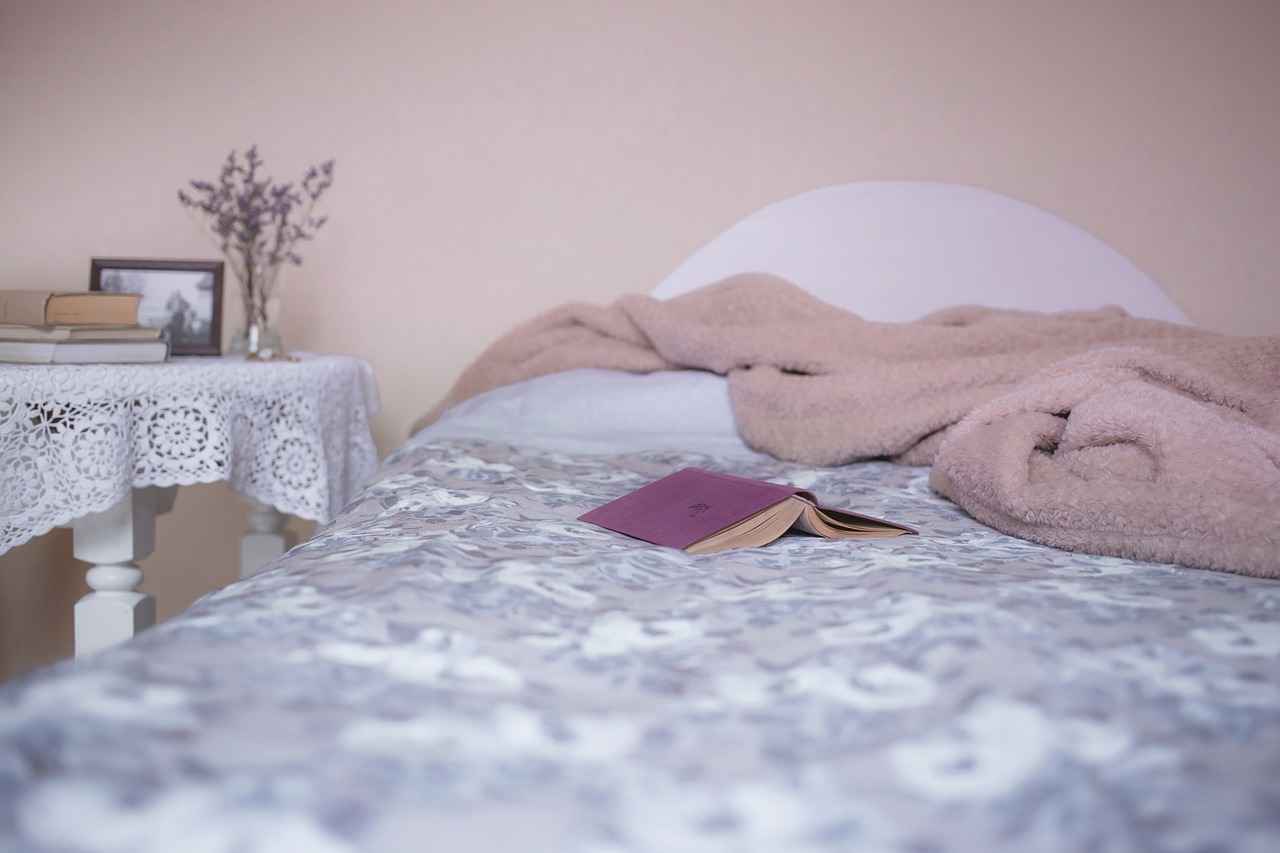
Choosing the Right Mattress for Small Beds
When it comes to small bed designs, choosing the right mattress is crucial for ensuring comfort and support. In compact living spaces, where every inch counts, a well-selected mattress can significantly enhance your sleep quality and overall well-being. This section delves into the essential factors to consider when selecting a mattress that fits your small bed while providing optimal support for a restful night’s sleep.
Importance of Mattress Size
The size of the mattress must align perfectly with the dimensions of your bed frame. A mattress that is too large can create an awkward appearance, while one that is too small may not provide the necessary comfort. When selecting a mattress, it’s vital to measure the bed frame accurately and choose a mattress that matches these dimensions. Common sizes for small beds include twin and full, but custom sizes are also available for unique bed designs.
Thickness Matters
Another critical aspect to consider is the thickness of the mattress. A thinner mattress may be more suitable for loft beds or Murphy beds, where space is limited. However, it’s essential to ensure that even a thinner mattress provides adequate support. A thickness of at least 8 to 10 inches is typically recommended for a good balance of comfort and support.
Material Selection
Different mattress materials come with their own set of advantages. Here are some options:
- Memory Foam: Offers excellent support and conforms to the body’s shape, making it great for pressure relief.
- Latex: Provides a more responsive feel and is known for its durability and breathability.
- Innerspring: Traditionally offers good support but may not provide the same level of comfort as foam options.
Consider your personal comfort preferences and any allergies when selecting the right material. For instance, those sensitive to dust mites might prefer hypoallergenic materials like latex.
Support and Firmness
Choosing the right level of firmness is essential for achieving a good night’s sleep. A mattress that is too soft may lead to poor spinal alignment, while one that is too firm can cause discomfort. It’s advisable to test various firmness levels to find the one that best suits your sleeping style. Side sleepers often benefit from a softer mattress, while back and stomach sleepers may prefer a firmer option.
Trial Period and Warranty
When investing in a mattress, look for options that come with a trial period. This allows you to test the mattress in your own home and ensures it meets your comfort needs. Additionally, a good warranty can provide peace of mind regarding the durability and longevity of your mattress.
Conclusion
Selecting the right mattress for small beds is a critical step in enhancing comfort in compact living spaces. By considering size, thickness, material, support, and trial options, you can find a mattress that not only fits your small bed design but also promotes restful sleep. Remember, investing time in this decision will pay off in the long run, leading to improved sleep quality and overall health.
Size and Thickness
When it comes to selecting the perfect mattress for small beds, are crucial factors that can significantly impact both comfort and the overall aesthetic of your space. In compact living areas, where every inch counts, it’s essential to choose a mattress that not only fits the bed frame but also complements the room’s design.
Understanding Mattress Dimensions
The first step in choosing the right mattress is to understand the dimensions of your bed frame. Small beds, such as twin or full sizes, often require mattresses that are specifically tailored to these dimensions. A mattress that is too large can make the bed appear bulky and overwhelming, disrupting the flow of the room. Conversely, a mattress that is too small can lead to discomfort and inadequate support during sleep.
Thickness Matters
The thickness of the mattress is another vital consideration. For small beds, a medium thickness mattress, typically ranging from 8 to 12 inches, is often ideal. This thickness provides a balance of support and comfort without taking up excessive vertical space. Thicker mattresses can create a sense of bulkiness, while very thin mattresses may lack the necessary support for a restful night’s sleep.
Complementing Bed Design
When selecting a mattress, it’s important to consider how it complements the overall bed design. For example, if you have a sleek, modern bed frame, a low-profile mattress can enhance the minimalist aesthetic. On the other hand, a more traditional bed frame may benefit from a thicker mattress that adds a touch of elegance and comfort. The goal is to create a harmonious look that ties the room together.
Material Considerations
- Memory Foam: Known for its ability to contour to the body, memory foam mattresses are great for providing support and pressure relief. They are available in various thicknesses, making them suitable for small beds.
- Innerspring: These mattresses offer a more traditional feel with a bouncier support system. They can be found in various thicknesses, but it’s essential to choose one that fits well with your bed frame.
- Latex: Latex mattresses are durable and provide excellent support. They come in different thicknesses and can be a great option for those who prefer a firmer sleeping surface.
Practical Tips for Selection
Here are some practical tips to keep in mind when choosing a mattress for small beds:
- Measure Your Space: Always measure your bed frame and the available space in your room before purchasing a mattress.
- Test for Comfort: If possible, test the mattress in-store. Comfort is subjective, and it’s essential to find a mattress that feels right for you.
- Consider Your Sleeping Position: Your preferred sleeping position can influence the type of mattress you need. Side sleepers may require more cushioning, while back sleepers might prefer a firmer surface.
In conclusion, choosing the right mattress for small beds involves careful consideration of size and thickness. By selecting a mattress that fits well within your bed frame and complements the overall design of your space, you can create a comfortable and aesthetically pleasing sleeping area. Remember to prioritize your comfort preferences and the overall functionality of the room when making your choice.
Material Options
When it comes to selecting the perfect mattress for your small bed, play a crucial role in ensuring both comfort and functionality. Each type of mattress material comes with its own set of advantages and characteristics that can significantly impact your sleep quality and overall experience. This article delves into the various mattress materials available, helping you make an informed decision based on your personal preferences, sleep habits, and any potential allergies.
- Memory Foam: This material has gained immense popularity due to its ability to conform to the body’s shape. Memory foam mattresses provide excellent support by distributing body weight evenly, which can alleviate pressure points and reduce discomfort. Additionally, they are known for their motion isolation properties, making them ideal for couples who share a bed. However, it’s essential to consider that some memory foam can retain heat, so opting for gel-infused or breathable options may enhance comfort.
- Latex: Known for its durability and responsiveness, latex mattresses offer a buoyant feel that can be beneficial for those who prefer a more traditional sleeping surface. Natural latex is also hypoallergenic, making it an excellent choice for individuals with allergies or sensitivities. Furthermore, latex mattresses tend to have good airflow, helping to regulate temperature throughout the night.
- Innerspring: Traditional innerspring mattresses consist of a coil support system, providing a classic feel and good bounce. These mattresses often feature various comfort layers on top, which can include foam or fiberfill. Innerspring mattresses are typically more affordable and offer a wide range of firmness options. However, they may not provide the same level of contouring support as memory foam or latex.
- Hybrid: Combining the best of both worlds, hybrid mattresses feature a combination of innerspring coils and foam or latex layers. This design offers the support of coils while providing the comfort and contouring of foam. Hybrids can cater to a variety of sleep preferences and are available in different firmness levels, making them a versatile choice for many sleepers.
- Airbeds: Adjustable airbeds allow users to customize firmness levels by adding or releasing air. This feature is particularly appealing for couples with differing firmness preferences. However, airbeds may not provide the same level of durability as traditional mattresses, and the mechanical components can sometimes lead to maintenance issues.
When selecting a mattress material, it’s vital to consider your comfort preferences, sleeping position, and any allergies you may have. For instance, side sleepers often benefit from softer materials like memory foam or latex that conform to the body’s curves, while back and stomach sleepers might prefer firmer options that provide adequate support. Additionally, if you have allergies, opting for hypoallergenic materials like natural latex can help improve your sleep environment.
Furthermore, it’s essential to test out different mattresses whenever possible. Many retailers offer a trial period, allowing you to experience the mattress in your home before making a final decision. Take advantage of this opportunity to ensure that the mattress you choose aligns with your comfort needs and preferences.
In conclusion, understanding the various mattress materials available can significantly enhance your sleep experience. By considering factors such as comfort, support, and potential allergies, you can select a mattress that not only fits your small bed design but also promotes restful sleep. Remember, a well-chosen mattress is an investment in your health and well-being, making it worth the time and effort to find the right one.

Creative Storage Solutions with Small Beds
In today’s world, where living spaces are becoming increasingly compact, the need for creative storage solutions is more important than ever. Small beds not only serve as a sleeping area but can also be designed to maximize storage capacity without sacrificing style. This section delves into innovative ways to incorporate storage into small bed designs, enhancing both functionality and aesthetics.
One of the most effective ways to utilize space in a compact bedroom is through under-bed storage. This often-overlooked area can be transformed into a practical storage solution that keeps your room organized and clutter-free.
- Storage Bins: Opt for clear plastic bins that allow you to easily see the contents. These can be slid under the bed, making them accessible yet out of sight.
- Drawers on Wheels: Consider using rolling drawers that can be pulled out easily. This option provides a seamless way to store items like shoes, seasonal clothing, or extra linens.
- Built-in Storage: Some bed frames come with built-in drawers designed specifically for under-bed storage, offering a sleek and integrated look.
Another innovative way to enhance storage in small bed designs is through headboard storage. This feature not only adds a decorative element to the room but also serves a practical purpose.
- Built-in Shelves: Headboards with built-in shelves can hold books, alarm clocks, and decorative items, keeping them within easy reach.
- Compartmentalized Headboards: Some designs include compartments that can store personal items like glasses, remotes, or chargers, ensuring a tidy sleeping area.
- Floating Headboards: A floating headboard with shelves can create an illusion of space while providing a stylish place to display decor.
Incorporating multi-functional furniture into your small bed design can significantly enhance usability. Look for beds that serve dual purposes, providing additional storage or functionality.
- Storage Ottomans: Consider using ottomans at the foot of the bed that can double as seating and storage for blankets or books.
- Convertible Beds: Some beds can be converted into sofas or daybeds, making them ideal for small spaces where every square foot counts.
- Lofted Beds: Lofted designs elevate the mattress, allowing for a desk or seating area underneath, effectively utilizing vertical space.
Wall-mounted storage solutions can also complement small bed designs, especially in tight quarters. These options help free up floor space while providing ample storage.
- Wall Shelves: Install shelves above the bed to hold books, plants, or decorative items, keeping them within easy reach while maximizing floor space.
- Hanging Organizers: Use hanging organizers on the wall or behind the door to store smaller items like accessories or toiletries, reducing clutter on surfaces.
- Hooks and Racks: Wall hooks can be a stylish way to store bags, hats, or jackets, making them easily accessible while saving space.
Incorporating these creative storage solutions into small bed designs can transform your compact living space into a functional and stylish haven. By maximizing every inch of available space, you can create a bedroom that meets your needs without compromising on aesthetics.
Under-Bed Storage
When it comes to maximizing space in compact living environments, is a game changer. This often-overlooked area can become a treasure trove for organizing your belongings, ensuring your room remains tidy and functional. In this section, we will explore various options for under-bed storage, highlighting their benefits and how to implement them effectively.
Utilizing the space beneath your bed not only helps in decluttering your room but also enhances the overall aesthetic. By keeping items out of sight, you create a more spacious and serene environment. Here are some compelling reasons to consider:
- Maximizes Floor Space: By storing items under the bed, you free up valuable floor space for other uses, such as a small seating area or additional furniture.
- Improves Organization: Keeping items organized and easily accessible helps maintain a tidy living space, reducing stress and enhancing productivity.
- Cost-Effective Solution: Many under-bed storage options are affordable and can be DIY projects, making them budget-friendly.
There are numerous ways to utilize the space under your bed effectively. Here are some popular options:
- Storage Bins: Clear plastic bins are ideal for storing seasonal clothing, shoes, or extra bedding. Their transparency allows you to see contents at a glance.
- Drawers: Under-bed drawers can be a stylish addition, providing a more polished look. They can be purchased or DIY-ed from old furniture.
- Built-in Storage: If you’re looking for a seamless design, consider beds with built-in storage compartments. These beds are designed to maximize space without compromising style.
Once you have chosen your storage solution, it’s essential to organize the items effectively. Here are some tips:
- Sort Items: Begin by sorting items into categories—clothing, shoes, linens, etc. This will help you determine what to keep under the bed.
- Label Containers: Use labels on bins or drawers to easily identify contents. This saves time when searching for specific items.
- Rotate Seasonal Items: Keep seasonal items like winter clothing or holiday decorations stored under the bed during off-seasons, rotating them as needed.
To ensure that your under-bed storage remains effective, regular maintenance is key. Here are a few practices to consider:
- Regularly Declutter: Every few months, take time to reassess what you have stored. Remove items that are no longer needed.
- Clean the Area: Dust and vacuum under the bed periodically to keep the space clean and free from allergens.
- Reorganize as Needed: As your needs change, be flexible with your storage solutions. Adapt and reorganize to best fit your lifestyle.
In conclusion, under-bed storage is a practical and efficient way to enhance organization in compact living spaces. By choosing the right storage solutions and maintaining them effectively, you can create a clutter-free environment that feels spacious and inviting. Embrace the potential of this often-neglected area, and transform it into a valuable asset for your home.
Headboard Storage
When it comes to maximizing space in compact living areas, emerges as a clever solution that combines functionality with aesthetic appeal. This innovative design feature allows homeowners to utilize vertical space effectively while keeping essential items within easy reach. In this section, we will explore the benefits of headboards with built-in shelves or compartments, how they can enhance your bedroom’s organization, and various styles available to suit your taste.
Headboards with built-in storage options offer several advantages:
- Enhanced Organization: These headboards provide a dedicated space for books, decorative items, and personal belongings, helping to keep your bedroom tidy and clutter-free.
- Space Optimization: By integrating storage into the headboard, you can maximize every inch of your bedroom, making it ideal for small spaces where every square foot counts.
- Stylish Design: Headboards with storage come in various designs and finishes, allowing you to choose a style that complements your existing decor while adding a modern touch.
There are several types of headboard storage solutions available, catering to different preferences and needs:
- Open Shelving: This design features shelves that are easily accessible, perfect for displaying books, plants, or decorative items.
- Closed Compartments: For a more streamlined look, consider headboards with enclosed storage, which can hide away personal items and maintain a clean aesthetic.
- Integrated Lighting: Some headboards come with built-in LED lights, providing both illumination and a stylish feature to enhance your nighttime reading experience.
When selecting a headboard with storage, consider the following factors:
- Size: Ensure the headboard fits well with your bed frame and does not overwhelm the space. Measure your wall and bed dimensions before making a purchase.
- Material: Choose materials that align with your aesthetic preferences and durability needs. Options range from wood and metal to upholstered designs.
- Style: From modern to rustic, the style of your headboard should complement your overall bedroom decor. Consider colors and finishes that harmonize with your existing furniture.
To make the most of your headboard storage, keep these practical tips in mind:
- Limit Clutter: Only store items you frequently use or love. This will prevent the headboard from becoming a dumping ground for miscellaneous items.
- Organize by Category: Group similar items together, such as books or decorative pieces, to create a visually appealing arrangement.
- Regularly Refresh: Periodically assess the items on your headboard and refresh them to keep the space looking organized and stylish.
In conclusion, headboard storage is an excellent solution for those looking to enhance the functionality and style of their compact bedrooms. With various designs available, you can find the perfect headboard that not only serves as a practical storage solution but also adds a touch of elegance to your space. By incorporating headboard storage, you can achieve a harmonious balance between comfort and organization, making your small bedroom feel more spacious and inviting.
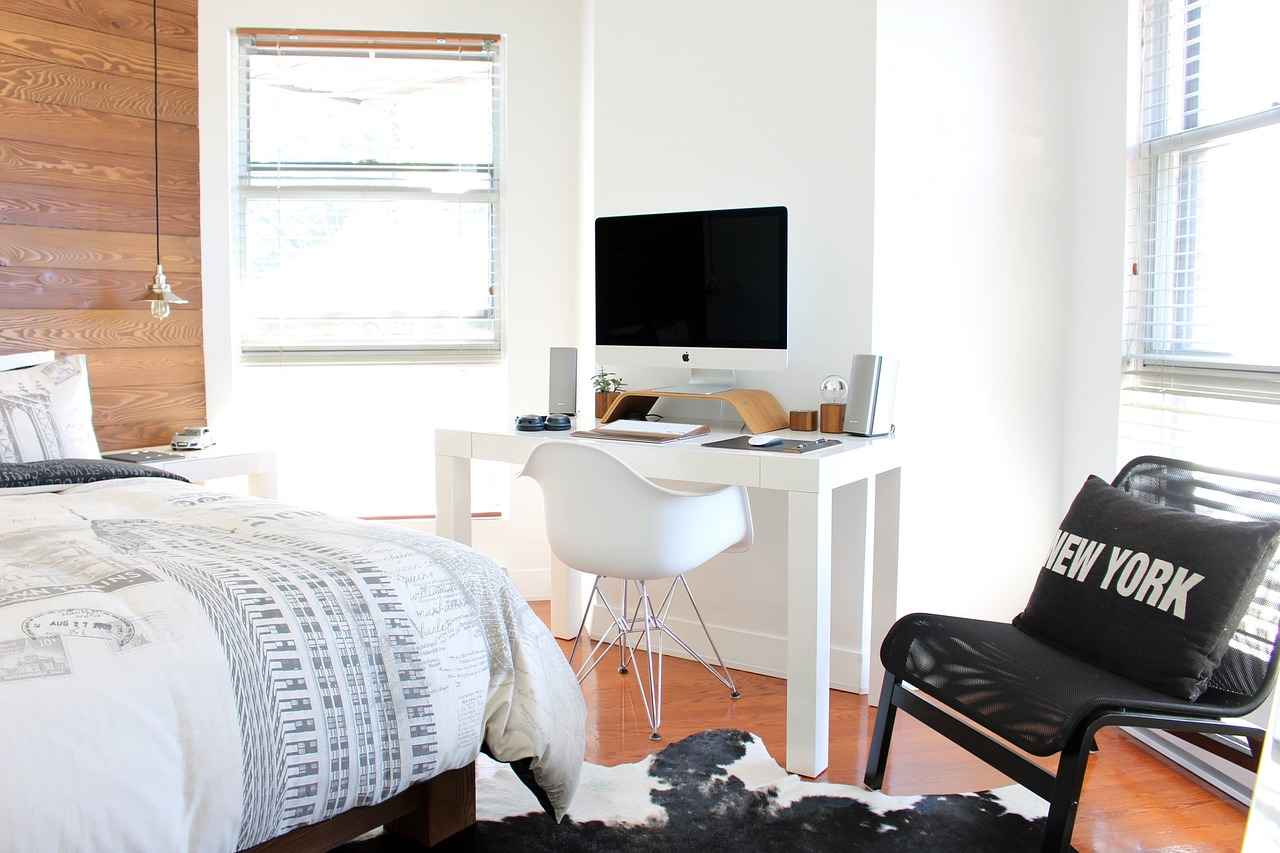
Incorporating Style into Small Bed Designs
When it comes to designing small spaces, functionality and style must go hand in hand. While it’s essential to maximize the utility of every square inch, overlooking the aesthetic elements can lead to a disjointed and uninspiring environment. In this section, we will explore how to seamlessly incorporate style into small bed designs, ensuring that your sleeping area is both practical and visually appealing.
One of the most effective ways to create a cohesive look in small bed designs is through color selection. Light colors, such as soft whites, pastels, and light grays, can make a room feel larger and more airy. Consider the following:
- Monochromatic Palettes: Using varying shades of a single color can create a sense of harmony.
- Accent Colors: Introduce a pop of color through accessories like pillows or throws to add interest without overwhelming the space.
Patterns can add depth and personality to small bed designs, but they must be used judiciously. Here are some tips:
- Subtle Textures: Opt for fabrics with light textures to add dimension without cluttering the visual space.
- Geometric Designs: These can create a modern look while keeping the area feeling organized and structured.
Accessories play a crucial role in enhancing the style of small bed designs. Here are some ideas:
- Throw Pillows: A few well-chosen throw pillows can add color and comfort. Mix different sizes and textures for a layered look.
- Wall Art: Hang art that resonates with your personal style. Consider a gallery wall with framed photos or a large statement piece to draw the eye.
A headboard can serve as both a design element and a functional feature. Explore options that include:
- Built-in Shelving: This allows for additional storage while providing a platform for decorative items.
- Upholstered Designs: Soft fabrics can add warmth and comfort to the room, making the bed a cozy focal point.
Lighting is a key component in any design, especially in small spaces. Consider the following:
- Layered Lighting: Combine ambient, task, and accent lighting to create a warm and inviting atmosphere.
- Wall Sconces: These save space on nightstands while adding a decorative touch.
Bringing nature indoors can enhance the overall aesthetic of small bed designs. Consider:
- Plants: Small potted plants or hanging planters can add a refreshing touch and improve air quality.
- Natural Materials: Wood, rattan, and bamboo elements can add warmth and texture, making the space feel more inviting.
In conclusion, incorporating style into small bed designs is not only possible but essential for creating a harmonious living environment. By carefully selecting color schemes, patterns, accessories, and lighting, you can achieve a space that is both functional and aesthetically pleasing. Remember, the key is to balance practicality with personal style, ensuring that every element contributes to a cohesive and inviting atmosphere.
Color Schemes and Patterns
When designing compact living spaces, the choice of color schemes and patterns plays a pivotal role in shaping the overall perception of the area. It is essential to understand how these elements can influence not only the aesthetics but also the functionality of the space.
Light colors tend to reflect more light, which can create an illusion of a larger area. Shades such as whites, creams, and soft pastels can make a room feel airy and open. These colors are particularly effective in small bedrooms where maximizing space is crucial. In contrast, darker colors can absorb light, making a room feel more enclosed. However, they can also add depth and richness when used strategically.
In addition to color, the choice of patterns can significantly impact the perception of space. Minimal patterns or subtle textures are often more effective in small areas. For instance, a bedspread with a delicate geometric design can add interest without overwhelming the senses. On the other hand, bold, large patterns can dominate a small room, making it feel cluttered.
To further enhance the perception of space, consider incorporating vertical lines in your design. Vertical stripes on walls or bedding can draw the eye upward, creating the illusion of higher ceilings. This design trick is particularly beneficial in compact spaces where ceiling height might be limited.
When selecting colors and patterns, it’s also important to consider the overall theme of the room. A cohesive design that harmonizes with the existing decor can create a seamless look. For example, if your furniture is predominantly modern, opting for a contemporary color palette with geometric patterns can enhance the overall aesthetic.
Furthermore, utilizing accent colors can add vibrancy without overwhelming the space. Accessories like cushions, throws, and artwork can introduce pops of color that complement the main color scheme. This approach allows for personality and style without compromising the spacious feel of the room.
Another effective strategy is to use mirrors strategically within the space. Mirrors can reflect light and colors, creating an illusion of depth and space. Placing a mirror opposite a window can amplify natural light, making the room feel brighter and larger.
Finally, remember that personal preference plays a significant role in choosing color schemes and patterns. While trends can guide your decisions, it’s vital to select colors and designs that resonate with your style and make you feel comfortable in your space.
- Light Colors: Create an airy feel.
- Minimal Patterns: Avoid overwhelming the space.
- Vertical Lines: Enhance the perception of height.
- Accent Colors: Add personality without clutter.
- Mirrors: Reflect light and create depth.
In conclusion, the thoughtful selection of colors and patterns can significantly influence the ambiance and functionality of compact living spaces. By opting for light colors, minimal patterns, and strategic design elements, you can create an inviting environment that feels both spacious and stylish.
Decorative Accessories
When it comes to designing a small bedroom, the incorporation of can play a pivotal role in enhancing both aesthetics and comfort. Accessories such as throw pillows, blankets, and wall art not only add visual interest but also allow you to express your personal style.
Choosing the Right Throw Pillows
- Throw pillows are an excellent way to introduce color and texture into your space. Opt for a mix of sizes and shapes to create a layered look.
- Select fabrics that feel good to the touch, such as cotton or velvet, to enhance comfort.
- Consider patterns that complement your bedspread or other furnishings in the room. For instance, geometric designs can add a modern flair, while floral patterns can evoke a more traditional feel.
The Importance of Blankets
- Blankets serve both practical and decorative purposes. They can keep you warm during chilly nights while adding a touch of style to your bed.
- Choose a blanket that contrasts with your bedding for a striking effect, or go for a monochromatic scheme for a more cohesive look.
- Textured blankets, like knitted or woven options, can add depth to your design, making the space feel more inviting.
Wall Art: A Window to Your Personality
- Wall art is a fantastic way to personalize your small bedroom. It can range from framed photographs to abstract paintings or even a gallery wall of mixed media.
- When selecting wall art, consider the color palette of your room. Art that incorporates your existing colors can tie the room together beautifully.
- Don’t shy away from oversized pieces; they can create a focal point that draws the eye and makes the room feel more spacious.
Creating a Cohesive Look
To achieve a harmonious design, ensure that all your decorative accessories work together. This doesn’t mean everything has to match perfectly; rather, they should complement each other in terms of color, texture, and style.
For example, if your bedspread features a bold pattern, consider using solid-colored throw pillows that echo one of the colors in the pattern. This technique can create a balanced look without overwhelming the senses.
Functional Accessories
In addition to their aesthetic value, some decorative accessories can serve functional purposes. For instance, decorative baskets can hold extra blankets or magazines, keeping your space tidy while adding to the decor. Similarly, a stylish bedside lamp can provide necessary lighting while enhancing the overall design.
Final Thoughts
Incorporating decorative accessories into your small bed design is an effective way to enhance the overall ambiance of your space. By thoughtfully selecting items that not only reflect your personal style but also serve practical purposes, you can create a cozy, inviting atmosphere that feels uniquely yours. Remember, the key is to strike a balance between functionality and aesthetics, ensuring that your small bedroom remains a comfortable retreat.
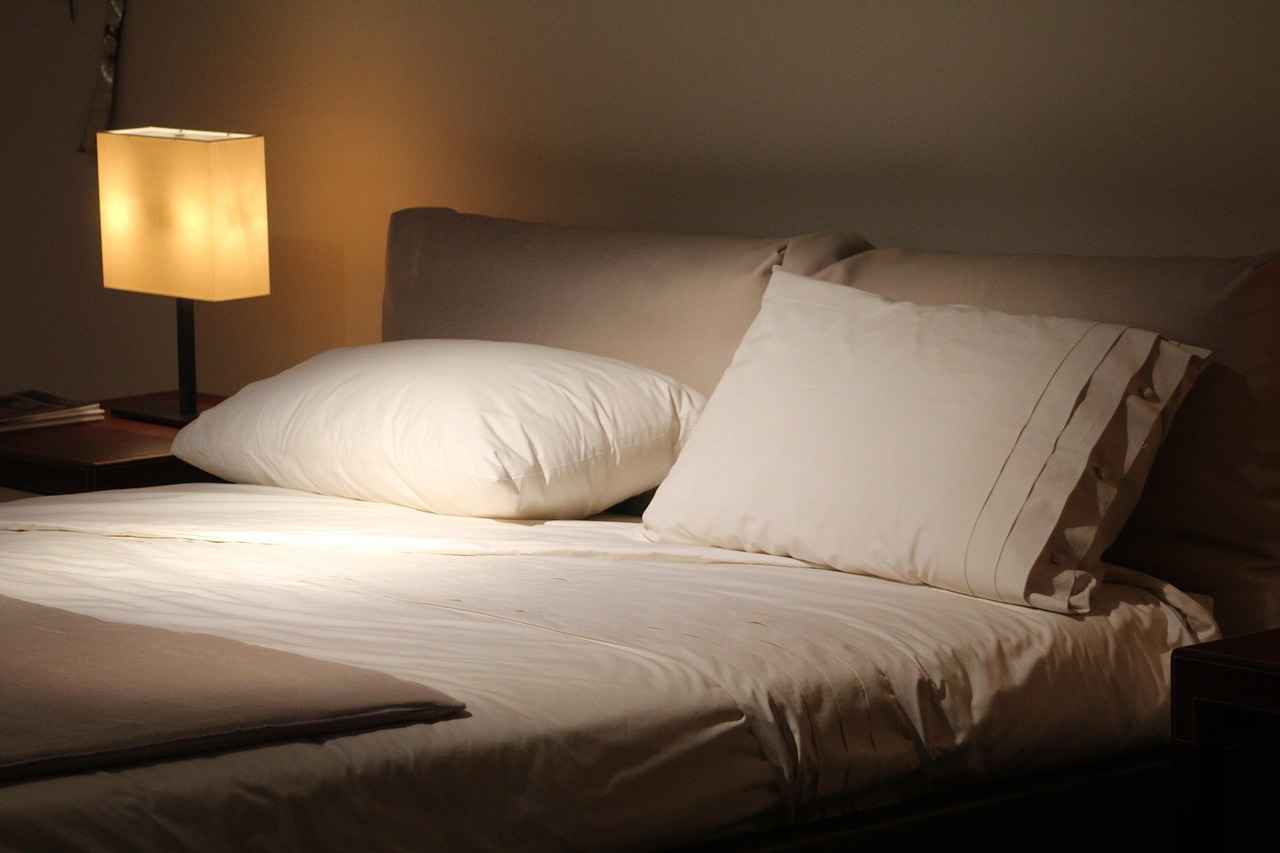
Conclusion
In the quest for creating a cozy and stylish sleeping area in compact living spaces, exploring various small bed designs is essential. These designs not only cater to the limited square footage but also elevate the overall aesthetic of the room. By incorporating practical insights, you can achieve a balance between comfort and style, ensuring that your sleeping area is both functional and visually appealing.
Compact living spaces, whether they are studio apartments or small bedrooms, require thoughtful design choices. The right bed design can significantly enhance the functionality of the room while maintaining an inviting atmosphere. It’s crucial to consider the layout, the amount of natural light, and the overall decor style when selecting a bed.
There are several innovative small bed options available that cater to diverse needs:
- Folding Beds: These beds can be easily folded away when not in use, providing flexibility and maximizing floor space.
- Trundle Beds: Perfect for accommodating guests, trundle beds offer an additional sleeping surface that can be tucked away when not needed.
- Convertible Sofa Beds: These multifunctional pieces serve as both a sofa and a bed, making them ideal for small living areas.
Incorporating storage into small bed designs is vital for maintaining an organized space. Here are some effective solutions:
- Under-Bed Storage: Utilize the space beneath the bed for bins or drawers to store seasonal clothing or extra linens.
- Built-In Shelving: Consider beds with integrated shelves or side tables that provide additional storage without occupying extra floor space.
Selecting the right mattress is critical for ensuring a good night’s sleep. Here are some tips:
- Size Matters: Ensure that the mattress fits the bed frame snugly to avoid any discomfort.
- Material Selection: Consider materials like memory foam or hybrid mattresses that provide support while being space-efficient.
While functionality is essential, style should also be a priority. Here are ways to enhance the aesthetic appeal:
- Color Choices: Light colors can make a small space feel larger, while darker hues can add warmth and depth.
- Decorative Elements: Use throw pillows, artwork, and rugs to add personality and charm to your sleeping area.
By exploring various small bed designs and incorporating practical insights, you can create a comfortable and stylish sleeping area in any compact space. The key lies in selecting the right bed type, maximizing functionality with storage solutions, and enhancing the overall decor. Embrace creativity and make the most of your space while ensuring that comfort remains a top priority. With thoughtful planning and design choices, small spaces can be transformed into inviting sanctuaries that reflect your personal style.
Frequently Asked Questions
- What is a Murphy bed, and how does it work?
A Murphy bed, often called a wall bed, is a bed that can be folded up against the wall when not in use. This design is perfect for small spaces as it frees up floor area for other activities. When you need to sleep, just pull it down, and voila! Instant bed.
- Are loft beds suitable for adults?
Absolutely! Loft beds are not just for kids. They can be a stylish and practical solution for adults, especially in studio apartments. By elevating the sleeping area, they create valuable space underneath for a desk, storage, or even a cozy reading nook.
- How do I choose the right mattress for a small bed?
When selecting a mattress for a small bed, consider both size and thickness. You want a mattress that fits snugly within the bed frame while providing the comfort and support you need. Don’t forget to think about materials too—memory foam, latex, or innerspring can all offer different benefits!
- What are some creative storage solutions for small beds?
There are plenty of clever storage ideas! Utilize the space under the bed with bins or drawers, or opt for a headboard with built-in shelves. These options help keep your room organized without sacrificing style or space.
- Can I incorporate style into my small bed design?
Definitely! Style is key, even in compact spaces. Use light colors and minimal patterns to create an illusion of a larger area. Plus, adding decorative accessories like throw pillows and wall art can personalize your space and enhance the overall design.














